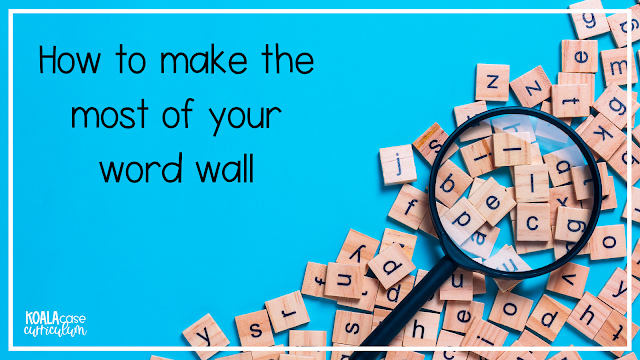Word walls.
The name doesn't invoke excitement, and usually brings to mind thoughts of gray cinder block walls. Walls that you would cover with random words in order to appease your administrators. You've probably seen other teacher's classrooms Pinterest-worthy word walls decorated with beautiful, color-coded words.
Ever feel like you were missing out and not sure where to start?
I was there. I didn't know how to use word walls. I didn't know how to choose words.
Thankfully, after going to a few professional developments, I found out how to use word walls. And it was pretty interesting! Some of my big takeaways:
1) You have to interact with the word wall. Every. Day. And I don't mean pointing to the wall and moving on. You have to make the word wall part of the lesson. When introducing new words to the students, put the words at the front of the room, on the board, or wherever you stand. Students need to use the word 10-15 times before it is internalized. I suggest introducing no more than 3 words in a class period. I know that can be tough when it seems like we have to teach everything and then some. But the important thing to remember is that it is better for the students to learn a few words REALLY well, than a lot of words they barely recognize.
2) Make the words accessible to the kids to look at (and even touch!) I know as a teacher, we value the items we put in our classroom. Majority of the time, we use our own hard-earned money for supplies. We definitely do NOT want students touching our stuff. Who knows the last time they washed their hands? 😷 But, a lot of students are tactile/kinesthetic learners. Have the words posted on a wall where students can see it from their seats, but isn't blocked by desks. You'll be surprised at how many go up to the wall during activities or to check out the pictures.
3) Speaking of pictures, use pictures in your words wall. You have no idea how much this helps struggling students and English Language Learners. You might have students who are under 504 or are struggling with history because they don't like the subject. Or, you might have English Language Learners who are trying to grasp not only conversational English, but academic vocabulary as well. We want to make sure we are doing everything we can to help them out.





No comments:
Post a Comment